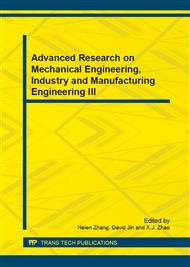p.482
p.486
p.494
p.498
p.502
p.507
p.511
p.516
p.521
The Stress Distribution Analysis of Spiral-Wound Heat Exchanger
Abstract:
The spiral-wound heat exchangers are mainly used in the industries of food, oil, natural gas and chemical industry with the merits of compact structure and high thermal efficiency. The FEM (Finite Element Method) has been used in this paper to analyze the stress distribution of two different welding methods of T-weld and butt-weld between the tube sheet and barrel with the procedure of modeling, defining constraints, applying loads, numerical calculation. Conclusions are obtained that structure of butt-weld connection is more reasonable than the T-weld method with much smaller stress with the same thickness circumstances of tube sheet.
Info:
Periodical:
Pages:
502-506
Citation:
Online since:
August 2013
Authors:
Price:
Сopyright:
© 2013 Trans Tech Publications Ltd. All Rights Reserved
Share:
Citation:


